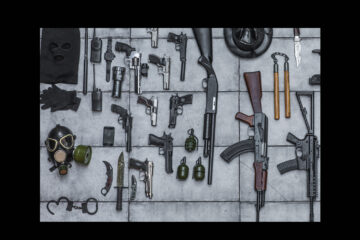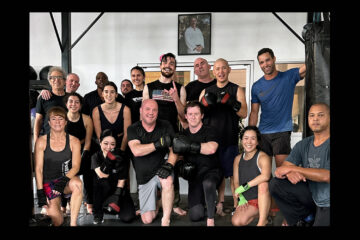Dena Levitz, The Washington Post
Knock your partner to kingdom come! Go ahead! Knee them!"
I was just 10 minutes into my first krav maga session at Krav Maga of DC in Chinatown, and I knew that this would be different from any other self-defense course I've taken.
"Punch as hard as you can, without worrying about how you look. Then we'll sculpt you and teach you to do it right," my instructor, Chris Torres, informed me and the other students, as if we were lumps of clay about to be fired into hardened pots.
My partner, another woman close to my size, at first acted offended that I wasn't whacking her hard enough. Who was I to argue? So I let loose and pretended she had just stolen my favorite pair of jeans.
My partner, another woman close to my size, at first acted offended that I wasn't whacking her hard enough. Who was I to argue? So I let loose and pretended she had just stolen my favorite pair of jeans.
Loosely translated from Hebrew as "contact combat," krav maga (pronounced KRAHV ma-GAH) is the self-defense system developed for the Israeli army 50 years ago and brought to the United States two decades later. As someone who has tried boxing and taekwondo, I thought krav would be an easy, or at least similar, experience.
I was wrong. Krav maga took those classes, chewed them up, spit them out and then -- just to be sure they wouldn't spring back into action -- head-butted them to the ground.
Within just the first two sessions of krav class, students work to master jabs, crosses, knees to the groin and several hard-core ways of slamming their elbows into their attacker's ribs or chest. In most exercises you're also told to imagine that a swarm of assailants is gunning for you. Obviously, this was not one of those self-defense classes where the moves are as graceful and pretty to watch as in "Swan Lake."
The stance used is similar to a boxer's but morphed to emulate a cobra: shoulders hunched, back bent in a slight C shape, with fighters holding their fingers spread, ready to strike at a moment's notice. The moves are rehearsed at full speed with students hurling their fists at pads as if the pads were a stranger in a bar who tried to cop a feel.
Self-defense classes too often don't allow participants to get their hands dirty, making it hard to leave feeling confident about your newfound abilities. With one session of krav maga, my hands were dirtied and bloodied. My knuckles were swollen and cut up by the end of the long hour. Truth be told, I felt like a tough chick.
And presumably that's the goal.
Close to 70,000 people worldwide are studying krav maga, up from 55,000 two years ago, says Ken Highland, marketing manager for Krav Maga Worldwide, the group that trains instructors worldwide.
Highland says those in the industry attribute much of this surge to Hollywood and the rise of mixed martial arts. "You have movies like 'Enough' with Jennifer Lopez showing krav, and it gets people interested," he says.
In the very little time the instructors spend talking, they hammer into students that the goal is not one lucky sucker punch; it's to respond to an attacker with such precise, rapid-fire moves that you overwhelm him and beat him to a pulp so you can get away.
Not exactly kid stuff. The pure physicality of it all is why the sport has had no trouble attracting men in droves. The small number of women who sign up tend to either feel patronized or out of place because of the macho style and then quit, says Carol Middleton, head of Krav Maga of DC.
Locally, however, Middleton has managed to do something different. Nearly half of her growing student body is female. Middleton, who teaches a considerable number of the classes at her training center, takes great care to make them women-friendly while not dumbing down the pounding factor.
"I didn't change the program. I changed how we talk to students, how we set an atmosphere," she says. "If you go into a class lots of other places, instructors don't even say their names. It's all about competition. I went to pains to make it so people get to know each other and form a community."
For Middleton, the best part of her work is hearing about students who found themselves in situations in which they didn't even have to fight. Krav prepared them to take on an opponent, they exuded a higher level of confidence and the challenger backed down.
"They're able to take care of themselves," she explains. "That's what we're after."
Click here to view the article on The Washington Post website.






